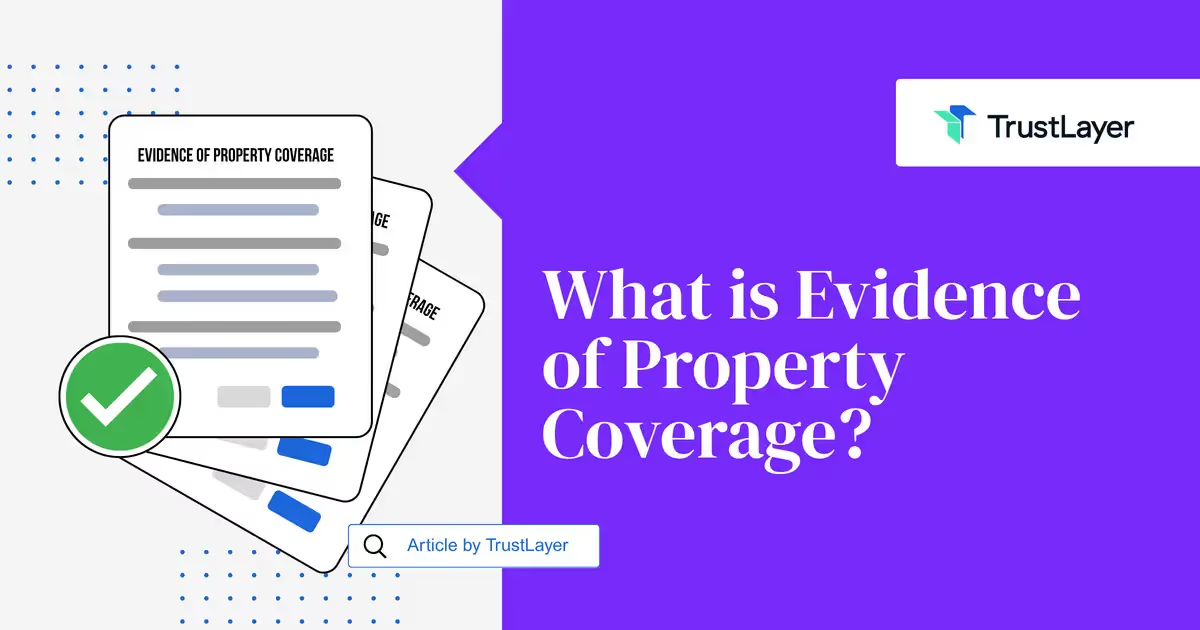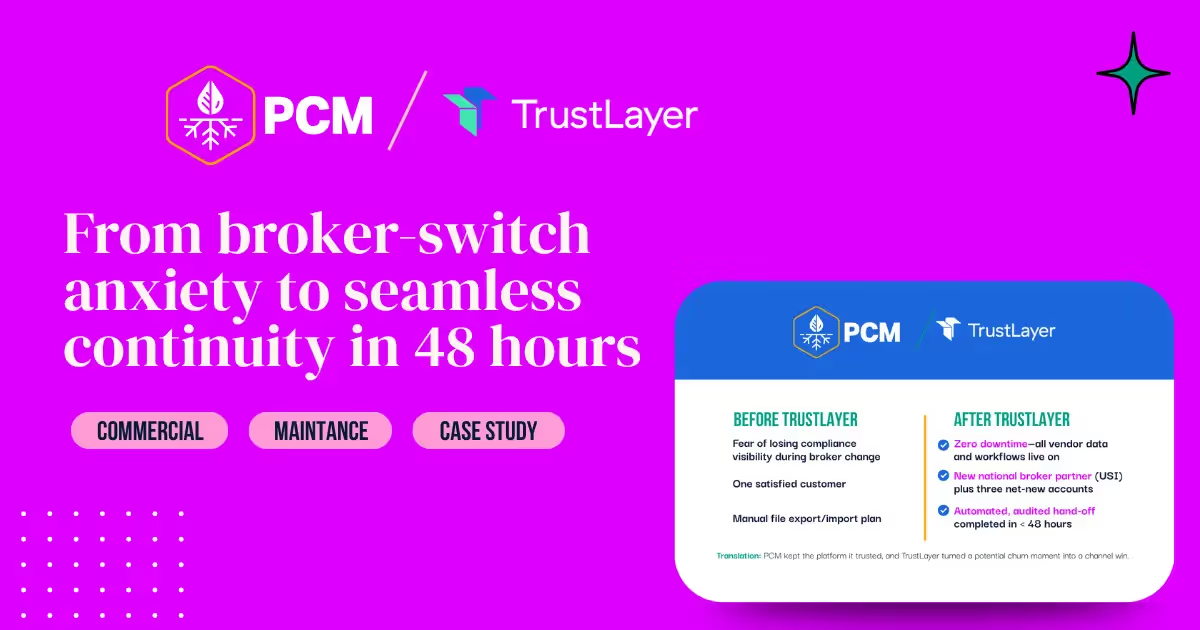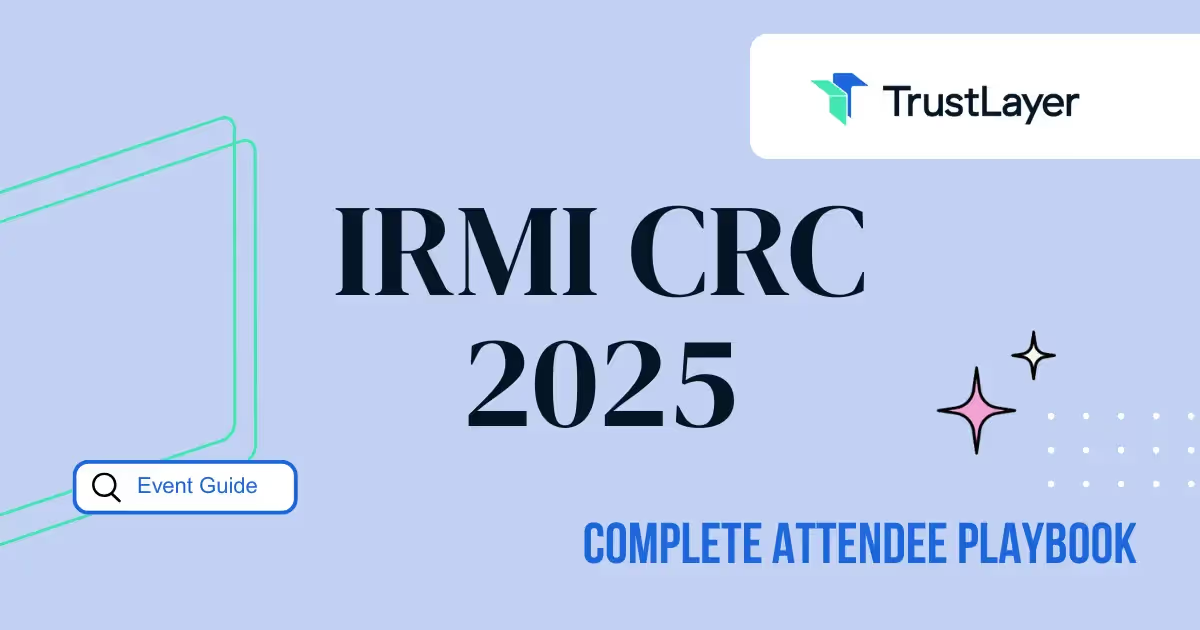What is Evidence of Property Coverage?

Understanding property coverage is essential for homeowners, landlords, and business owners alike. Evidence of property coverage serves as a crucial document that provides proof of insurance protection for physical assets. This article examines the nature of property coverage evidence, its significance, and the methods for obtaining it.
Defining Evidence of Property Coverage
Evidence of property coverage refers to documentation that confirms an individual or entity has insurance coverage for their property. This can include residential homes, commercial buildings, or personal belongings. The evidence typically comes in the form of a certificate of insurance or an insurance policy declaration page.
These documents outline the specifics of the coverage, including the types of risks covered, the coverage limits, and the policy's duration. Understanding these details is crucial for anyone seeking to protect their investments against potential losses. Furthermore, it is essential to regularly review and update this evidence, especially after significant changes to the property or its value, to ensure that the coverage remains adequate and relevant.
Types of Property Coverage
Property coverage can vary significantly depending on the type of policy and the nature of the property being insured. Common types include:
- Homeowners Insurance: This covers personal residences and typically includes protection against theft, fire, and certain natural disasters.
- Commercial Property Insurance: Designed for businesses, this type of coverage protects buildings, equipment, and inventory against various risks and losses.
- Renters Insurance: This provides coverage for personal belongings within a rented property, protecting against losses due to theft or damage.
In addition to these standard types, specialized policies are available for unique situations, such as flood insurance, which is often necessary for properties in high-risk flood zones, or earthquake insurance, which can be crucial for those living in seismically active areas. Each type of coverage addresses specific risks and potential losses, making it essential for property owners to assess their unique circumstances when selecting the most suitable insurance policy.
Importance of Evidence of Property Coverage
Having evidence of property coverage is not just a formality; it serves several critical purposes. For one, it provides peace of mind, knowing that financial protection is in place should an unexpected event occur. Additionally, it is often required by lenders or landlords as a condition for financing or leasing.
Moreover, evidence of property coverage can be crucial during legal disputes or claims processes. It acts as a tangible record of the coverage in place, helping to clarify what is and isn’t protected under the policy. This documentation can significantly expedite the claims process, as insurers will rely on it to determine the validity of a claim. Furthermore, having this evidence readily available can help property owners negotiate better terms with their insurers, as they can demonstrate their commitment to maintaining adequate coverage and mitigating risks.
How to Obtain Evidence of Property Coverage
Obtaining evidence of property coverage is typically a straightforward process, but it can vary depending on the insurance provider and the type of property involved. Here are some steps to follow:
Contact Your Insurance Provider
The first step in obtaining evidence of property coverage is to contact your insurance provider. Most companies have customer service representatives who can assist with requests for documentation. It’s essential to have your policy number and personal identification ready to expedite the process.
In many cases, insurance companies can provide a digital copy of the certificate of insurance or policy declaration page via email, making it easy to access and share as needed. Additionally, many insurance providers now offer online portals where policyholders can log in to view and download their documents directly, saving time and ensuring they have the most up-to-date information readily available.
Review Your Policy
Before requesting evidence of coverage, it’s beneficial to review your insurance policy. Understanding the specifics of your coverage can help you identify any areas that may need clarification or adjustment. This knowledge can also empower you to ask informed questions when speaking with your insurance provider.
Additionally, please note any endorsements or exclusions that may apply to your policy. For instance, certain natural disasters or specific types of damage might not be covered unless additional riders are purchased. Familiarizing yourself with these details not only prepares you for a productive conversation with your insurer but also ensures that you are adequately protected against potential risks that could affect your property.
Understanding the Components of Evidence of Property Coverage
When reviewing evidence of property coverage, it’s essential to understand the various components that comprise the documentation. Familiarity with these elements can help ensure that the coverage meets your needs.
Coverage Limits
Coverage limits refer to the maximum amount an insurance company will pay for a covered loss. These limits can vary depending on the type of property and the specific risks associated with it. It’s crucial to ensure that the coverage limits are adequate to fully protect your property.
For instance, if a home is valued at $300,000, but the coverage limit is only $200,000, the homeowner may face significant out-of-pocket expenses in the event of a total loss. Regularly reviewing and adjusting coverage limits in response to changes in property value can help mitigate this risk. Additionally, it's wise to consider the potential costs associated with rebuilding or repairing property, which may exceed the market value due to inflation or increased labor and material costs over time. This proactive approach can provide peace of mind and financial security.
Exclusions and Endorsements
Every insurance policy has exclusions, which are specific situations or conditions that are not covered under the policy. Understanding these exclusions is vital for property owners to avoid surprises when filing a claim. Standard exclusions might include damage caused by floods or earthquakes, which may require separate policies.
Endorsements, on the other hand, are additions to a policy that modify the coverage. They can enhance protection by adding specific coverage for valuable items or unique risks. Reviewing endorsements can help property owners tailor their insurance to meet their particular needs. For example, if you own expensive jewelry or artwork, an endorsement can provide additional coverage that exceeds the standard limits of a homeowner's policy. This customization not only protects your valuable assets but also ensures that you are not left vulnerable in the event of a loss. Understanding the nuances of these endorsements can empower property owners to make informed decisions about their coverage options.
Everyday Situations Requiring Evidence of Property Coverage
There are several scenarios where having evidence of property coverage becomes particularly important. Being prepared for these situations can save time and stress in the long run.
Real Estate Transactions
When buying or selling property, evidence of property coverage is often required. Lenders typically request proof of insurance before finalizing a mortgage, ensuring that the property is protected from potential risks. Sellers may also need to provide this documentation to reassure buyers that the property is adequately insured. This requirement not only helps in securing financing but also serves as a safeguard against unforeseen events that could jeopardize the investment. For instance, if a natural disaster were to strike shortly after the sale, having insurance in place would mean that the new owner could recover losses without facing financial ruin.
Leasing Agreements
Landlords often require tenants to provide evidence of renters' insurance as a condition of the lease. This protects both parties by ensuring that the tenant’s personal belongings are covered and that the landlord is safeguarded against potential liability claims. Additionally, renters' insurance can cover incidents such as theft or damage caused by fire, which can be crucial in urban settings where such risks are heightened. Furthermore, having this insurance can foster a sense of responsibility among tenants, encouraging them to take better care of the property and adhere to the lease terms, knowing they have a safety net in place.
Insurance Claims
In the unfortunate event of damage or loss, having evidence of property coverage is essential for filing insurance claims. Insurers require documentation to verify the existence of coverage before processing any claims, a process that can be lengthy and complicated. This documentation not only speeds up the claims process but also ensures that policyholders receive the compensation to which they are entitled. For example, if a homeowner experiences water damage due to a burst pipe, having immediate access to proof of insurance can facilitate quicker repairs and minimize disruption to their daily life. Moreover, it can help in negotiating with contractors or service providers, as they may require assurance that payment will be forthcoming.
Maintaining and Updating Your Coverage
Once evidence of property coverage is obtained, it’s essential to maintain and update the policy regularly. Changes in circumstances can affect the adequacy of coverage, and being proactive can prevent potential gaps in protection.
Regular Policy Reviews
Conducting regular reviews of your insurance policy can help ensure that it remains aligned with your needs. Life events such as renovations, acquiring new valuables, or changes in property value can all necessitate updates to coverage limits or types of protection.
Additionally, it’s wise to review the policy annually to account for changes in the market or personal circumstances. This practice can help identify any necessary adjustments before they become urgent. For instance, if you've recently renovated your home, the increased value of your property may require higher coverage limits to adequately protect your investment. Similarly, if you've purchased expensive electronics or jewelry, ensuring these items are included in your policy can prevent financial loss in the event of theft or damage.
Communicating with Your Insurance Agent
Maintaining open communication with your insurance agent is key to ensuring that your property coverage remains adequate. Regular discussions can clarify any questions about the policy and provide insights into potential enhancements.
Insurance agents can also inform policyholders about new coverage options or endorsements that may be beneficial as circumstances change. This proactive approach can lead to better protection and peace of mind. Furthermore, staying informed about industry trends and changes in regulations can empower you to make educated decisions regarding your coverage. For example, understanding the implications of climate change on property insurance may prompt you to consider additional coverage for natural disasters, which can be particularly relevant depending on your geographical location. Engaging in these discussions not only strengthens your relationship with your agent but also ensures that you are maximizing the benefits of your policy.
Conclusion
Evidence of property coverage is a vital component of protecting one’s assets. Understanding what it is, how to obtain it, and the importance of maintaining adequate coverage can empower both property owners and tenants. Regularly reviewing policies and staying informed about changes in coverage options can help ensure that individuals are well-prepared for any unforeseen events.
In a world where risks are ever-present, having the proper evidence of property coverage can make all the difference in safeguarding investments and providing peace of mind. Whether it’s a home, a rental, or a business, being proactive about property insurance is a wise decision that pays off in the long run.
As you consider the importance of evidence of property coverage, remember that managing certificates of insurance and staying compliant doesn't have to be a burden. TrustLayer is revolutionizing the way modern risk managers operate, offering a best-in-class Certificate of Insurance (COI) tracker that automates the tedious tasks of document collection, storage, and verification. With TrustLayer, you can collaborate on vendor document management efficiently, saving time and money while ensuring accuracy and reliability. Embrace the future of risk management and join the hundreds of thousands of companies that have streamlined their processes with TrustLayer. Don't let manual compliance checks slow you down. Schedule a time to speak with our team and learn how TrustLayer can enhance your approach to property coverage verification.
















